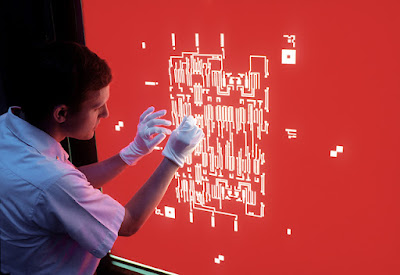Calculators, codes, and hidden messages

by Leonard Tramiel Looking at a list of the chips used in Commodore calculators we see some letter and number combinations that are quite meaningful, if you know the stories. Some of the most sophisticated processors that Commodore made were based on a custom chip set that used a common processor and different ROMs (or two) that contained the code for that particular model. I wrote the firmware for a few of those. Like this one: Photo credit: Dave McMurtrie One of my favorite memories is the way those ROMs were programmed, as described here . This processor was a fully custom chip and it required a LOT of engineering work, time, and money. When my father, Jack Tramiel, was persuaded to approve the project he told the person in charge "God help you" if this doesn't work. The chips all have product names the contain GHU for God Help Us. The first set of calculator chips that Commodore engineers developed included as much of the circuitry as thought possible into a single ...

